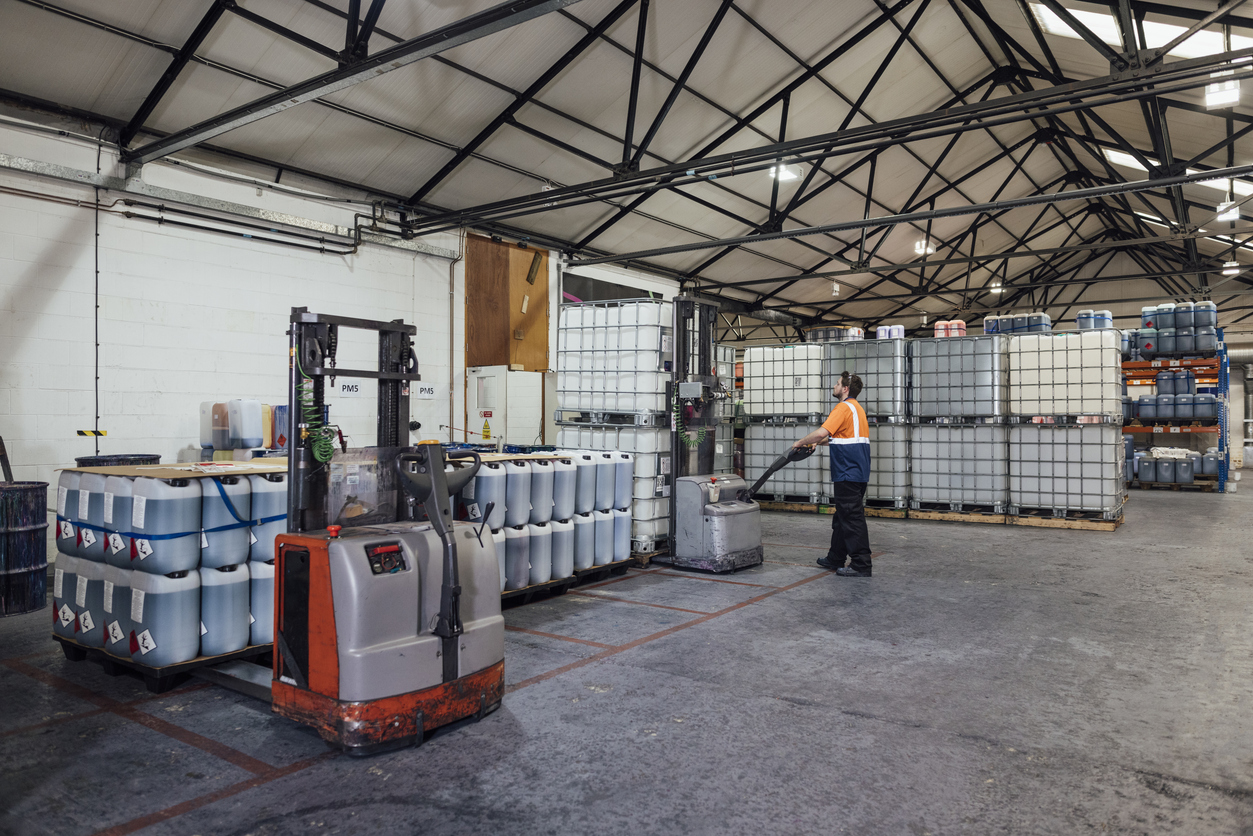Strategies for Effective Bulk Ingredient Storage
Bulk ingredients encompass any substance purchased in large quantities. They may be solids, such as grains and nuts, or liquids, like olive oil and aloe extract. Ingredients may include bulk substances manufactured for use in health and beauty products. Regardless of the industry, all bulk ingredients must comply with applicable storage regulations issued by the US Food and Drug Administration.
Those requirements mean maintaining the appropriate storage and shipping environment for each ingredient. Whether it is temperature-controlled storage or pallet racking, experienced third-party logistics (3PL) providers have strategies for bulk ingredient storage. However, finding the right 3PL partner begins with understanding what a bulk ingredient storage solution includes.
Understanding Bulk Ingredient Storage
Suppliers continue to face supply chain challenges that can impact the quality and safety of bulk ingredients used in food, health, and beauty products. Companies cannot control the weather or geopolitical disruptions that can damage ingredients, but they can mitigate delays in transport times and inadequate storage and warehousing practices that can harm the bottom line.
Businesses often find in-house bulk ingredient storage difficult to manage and costly to maintain. They may not have the resources to operate multiple storage environments or lack flexibility in how ingredients are handled. Any weaknesses in the supply chain can result in code violations and potential product recalls.
3PLs have the flexibility to address the different needs of bulk ingredients. They understand that multiple storage strategies are necessary to ensure the quality and safety of bulk ingredients.
Storage Methods
The best way to store bulk ingredients depends on their state. Are they liquids or dry powders? Will they be stored in bags, bins, or on pallets? Understanding storage options makes it easier to identify a logistics partner with comprehensive solutions for bulk ingredients.
Floor or Block Stacking
Floor stacking means placing a single row of bulk containers on the warehouse floor. This method does not take advantage of the vertical space above the first row of containers. Floor stacking is the basis for block stacking, which occurs when containers are stacked on top of each other. These methods take up warehouse space and are often reserved for items that require special handling.
Pushback Racking
Pushback racking loads pallets from the front of a storage system. Pallets are placed at the start of each rack. As pallets are added to the rack, the existing pallets are pushed to the back. When a pallet is removed, the remaining pallets move forward. The storage method uses a last-in, first-out strategy.
Pallet Flow Racking
Pallet flow racking relies on gravity to move loaded pallets automatically to the unloading position. When a pallet is removed, the remaining pallets move forward, placing the next pallet in the unloading position. The pallet flow storage method uses the first in, first out strategy.
Pallet Racking
Pallet racking forms the foundation of most warehouse storage systems. They have vertical columns that vary in height and horizontal beams that come in different depths and widths. The columns provide the infrastructure for the load-bearing horizontal racks that hold palletized goods. Pallet racks take advantage of vertical space.
Container or Bin Storage
Containers such as bins and totes offer added protection for bulk ingredient storage and shipping. Liquid ingredients are often shipped in multi-gallon plastic containers of varying sizes and shapes. Placing them in bulk boxes creates uniformity and allows the large containers to be stored on pallet racks. Many bulk boxes include dividers to protect containers during transport.
Vertical Storage
Adding a mezzanine floor to a warehouse increases its storage footprint. Mezzanines are platforms that sit between a warehouse’s floor and ceiling. They rest on pallet racks and cover a portion of the floor space. Made from steel, aluminum, or fiberglass, mezzanine structures provide a safe option for bulk ingredient storage.
Strategies for Efficient Bulk Ingredient Storage
The only characteristic that bulk ingredients share is quantity. Their shape, weight, and dimensions vary. Some ingredients deteriorate in humid conditions, while others require climate-controlled storage to maintain consistent environmental conditions. Understanding the unique requirements of bulk ingredients ensures the quality and safety of the final product.
Control Humidity
Grain is often shipped in sacks or bulk bags that can be stacked on pallets and placed on racks. If the storage space is not climate-controlled, the grain can become damaged from the moisture in the air, especially in areas with high humidity. Damp grain can become moldy, decreasing its quality and value. Ensuring that the grain is dry before storing and is kept in a climate-controlled facility minimizes the risk of moisture-damaged grain.
Maintain Consistent Temperatures
The chemical properties of oils vary significantly. Some oils are sensitive to temperature, transforming from a liquid to a solid or vice versa, depending on temperature variations. For example, olive oil should be stored at temperatures between 50 and 64 degrees Fahrenheit. Coconut oil can become a solid if stored at or below 70 degrees.
Provide Climate Controls
Like cooking oils, sweeteners can require specialized handling. For example, granulated sugar becomes lumpy when exposed to moisture. This may not change the taste, but it does alter its texture and appearance. Brown sugar should be stored to minimize its exposure to dry conditions. The molasses in brown sugar will evaporate, resulting in hard instead of soft brown sugar.
Use Cold or Refrigerated Storage
Perishable food items may need to be refrigerated or placed in cold storage to prevent spoilage. Ingredients used in health and beauty products may require consistent cold storage to retain their efficacy.
Quality and Safety Practices for Storing Bulk Ingredients
Government agencies such as the FDA and the USDA regulate the production, packaging, shipping, and storing of food, health, and beauty products. OSHA oversees the working environment to ensure worker safety. 3PL providers ensure that appropriate processes and policies are in place for compliance.
3PLs can also receive certifications, such as the following, to indicate their compliance with best practices for bulk ingredient storage.
- Safe Quality Food (SQF) Certification: SQF certification is a global standard for food safety and quality.
- Good Manufacturing Practices (GMP): GMP refers to a set of best practices for ingredients governed by the FDA or the WHO.
- Organic Certifications: To operate as an organic warehouse facility, organizations must implement the USDA’s recommended procedures and policies to ensure product integrity and eliminate possible cross-contamination with non-organic ingredients.
Adhering to regulations and best practices is another way 3PLs can help companies implement effective strategies for effective bulk ingredient storage.
Effective bulk ingredient storage strategies consider not only how ingredients are stored but also how to maximize storage space for a cost-effective solution. They ensure that quality and safety regulations are in place to protect people and product ingredients. If you’re looking for a 3PL partner with bulk ingredient storage expertise, contact us to learn more about our strategies.
Sources:
https://www.fda.gov/cosmetics/cosmetics-laws-regulations/fda-authority-over-cosmetics-how-cosmetics-are-not-fda-approved-are-fda-regulated#










